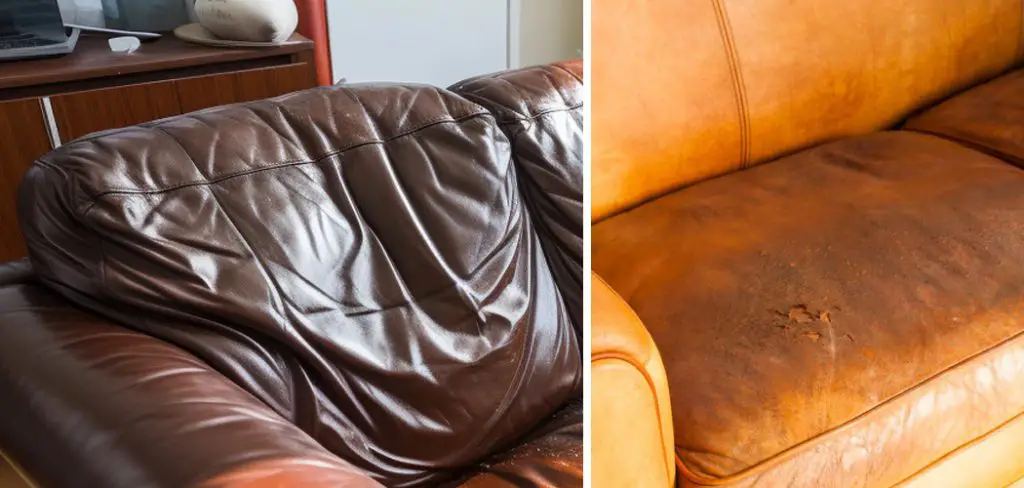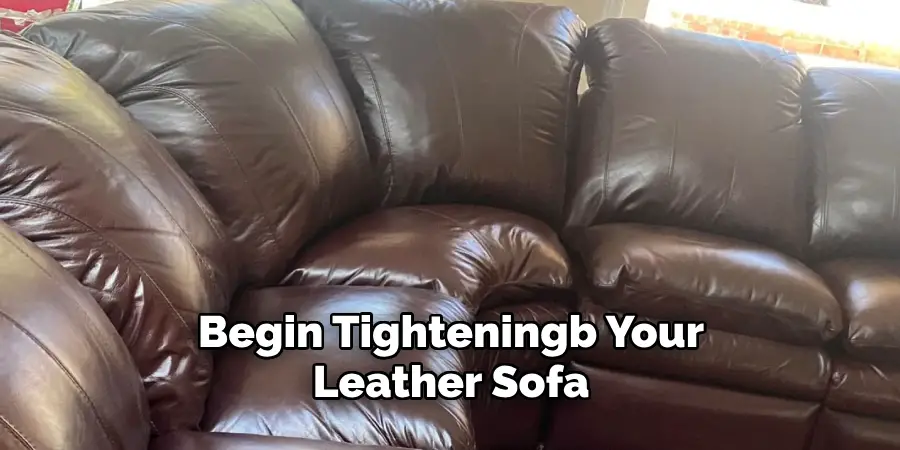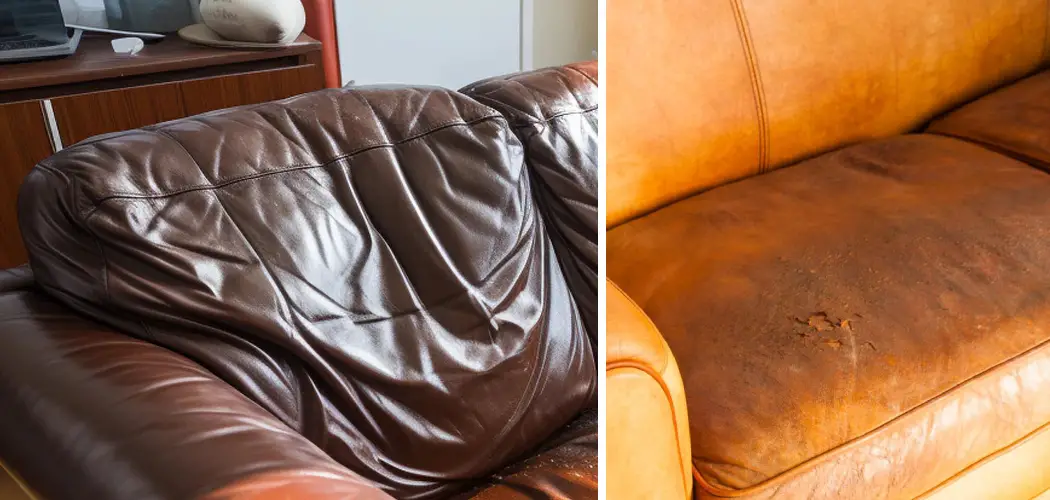Over time, leather sofa seats may begin to sag or lose their firmness due to regular use and natural wear. This can impact not only the appearance of your sofa but also its comfort and durability.
This guide will walk you through how to tighten leather sofa seats, providing tips and techniques to help simplify the task. Fortunately, tightening leather sofa seats is a manageable task that can restore their original look and feel. Whether you want to maintain your sofa’s aesthetic appeal or prolong its lifespan, following the right steps will help you achieve a refreshed and polished result.

Importance of Maintaining a Leather Sofa’s Appearance
Maintaining the appearance of your leather sofa is essential for preserving its value, comfort, and overall aesthetic. A well-kept leather sofa can enhance the visual appeal of your living space, acting as a focal point in your home. Proper maintenance prevents issues such as sagging, cracking, or discoloration, which can arise from neglect or overuse.
Additionally, routine care, such as cleaning and conditioning, helps the leather retain its natural oils, ensuring it remains soft and supple over time. By prioritizing the upkeep of your leather sofa, you not only extend its lifespan but also maintain the elegance and sophistication it adds to your space.
Common Causes of Sagging Leather Seats
Sagging leather seats can result from a variety of factors, many of which are linked to regular usage and natural aging. One of the primary causes is the breakdown of the seat’s internal cushioning, such as foam or batting, which loses its resilience over time. Frequent or uneven usage, such as consistently sitting in the same spot, can accelerate this wear and create compressed or indented areas.
Another contributing factor is the loosening of the leather upholstery itself, which can stretch after repeated use or exposure to heat and humidity. Additionally, the frame or support structure beneath the seat may weaken or shift, further exacerbating the sagging effect. Understanding these common causes is key to identifying the most effective solutions for restoring your sofa seats.
Tools and Materials Needed
Before you begin tightening your leather sofa seats, gathering the right tools and materials is essential for a smooth and effective process. Here’s a list of items you may need:

- Staple Gun and Staples: To secure the leather upholstery tightly back into place.
- Screwdriver: For removing or tightening screws on the sofa frame if necessary.
- Upholstery Needle and Thread: Useful for reinforcing seams or making small repairs to the leather.
- Pliers: To remove old staples or pull fabric taut during the process.
- Foam or Batting: Replacement materials to add cushion and restore support to the seat.
- Leather Conditioner: To soften and treat the leather after adjustments, ensuring it remains supple.
- Measuring Tape: For accurate measurements to cut and fit additional materials.
- Scissors or Utility Knife: To trim foam, batting, or excess fabric.
- Protective Gloves: To keep your hands safe while working with tools and materials.
Having these tools and materials ready will prepare you to effectively address sagging and achieve a polished, professional-looking result.
10 Methods How to Tighten Leather Sofa Seats
1. Adjusting the Cushion Filling
Sagging leather seats often result from compressed cushion filling. Remove the cushions from the sofa and unzip the covers if they are accessible. Add new stuffing such as high-density foam, polyester fiberfill, or batting to replenish their firmness. Spread the filling evenly to avoid lumps and ensure a smooth surface. Reinsert the cushions and adjust them to fit snugly in place, restoring the sofa’s original structure.
2. Using a Hair Dryer or Heat Gun
Leather has natural elasticity that can be tightened with controlled heat. Clean the leather surface thoroughly, then use a hair dryer or heat gun on a low setting to warm the leather. Hold the heat source a few inches away and move it continuously to avoid scorching. As the leather warms, it will contract slightly, reducing wrinkles and sagging. Allow it to cool naturally to set the shape.
3. Replacing Worn-out Support Webbing

The webbing or straps beneath the cushions can wear out over time, causing the seats to sag. Turn the sofa over and inspect the webbing for signs of looseness or damage. Replace any worn-out straps with new, durable webbing, securing them tightly with staples or screws. Properly tensioned webbing provides better support, lifting the cushions and tightening the leather seats.
4. Adding Plywood or Support Boards
For sofas with weakened internal support, adding a piece of plywood or a support board beneath the cushions can provide immediate reinforcement. Measure the sofa’s dimensions and cut a board to fit snugly in the frame. Place the board under the cushions to prevent them from sinking into the frame. This quick fix improves the firmness of the seats and prevents further sagging.
5. Applying Leather Conditioners
Leather conditioners help restore the material’s elasticity and prevent it from becoming brittle. Clean the sofa thoroughly to remove dust and debris. Apply a high-quality leather conditioner evenly across the surface, allowing it to penetrate the material. The conditioner will soften the leather, making it more flexible and capable of returning to its original shape. Repeat this process periodically to maintain the leather’s suppleness.
6. Restuffing the Cushion Inserts
If your sofa cushions are removable, restuffing them can make a significant difference in tightening the seats. Remove the old filling and replace it with new, high-density foam or memory foam. For an even firmer feel, wrap the foam in batting before reinserting it into the cushion covers. This method not only tightens the leather but also enhances the overall comfort of the sofa.
7. Tightening with Upholstery Staples
Loose leather can be tightened by securing it directly to the sofa frame. Remove the cushions and examine the underside of the leather. Pull the loose sections taut and staple them to the frame using a heavy-duty staple gun. Work evenly across the surface to avoid uneven tension. Once the leather is secured, reattach the cushions and enjoy a firmer, sleeker look.
8. Reinforcing with Elastic Bands
Elastic bands can provide additional support to sagging seats. Turn the sofa over and attach durable elastic straps across the frame beneath the cushions. Use screws or brackets to secure the bands tightly in place. The added tension from the elastic bands will lift the cushions and help tighten the leather above. This method is cost-effective and simple to implement.

9. Professional Steam Treatment
Steam treatment is a professional-grade solution that can tighten leather and remove wrinkles. Hire a professional upholstery service to steam the leather sofa, as they have the necessary equipment and expertise to handle the process safely. The steam softens the leather, allowing it to contract as it cools, while also cleaning the surface. This method is especially effective for stubborn sagging or creases.
10. Reupholstering the Sofa
If the leather is excessively stretched or the internal support is beyond repair, reupholstering the sofa might be the best long-term solution. This involves replacing the old leather with new material and possibly repairing or upgrading the frame and cushioning. While this method requires professional help and can be costly, it will restore your sofa to a like-new condition and extend its usability for years to come.
Things to Consider When Tightening Leather Sofa Seats
When embarking on the task of tightening your leather sofa seats, it’s important to consider several factors to ensure you achieve the desired results without causing damage.
- Material Condition: Inspect the leather for any signs of cracking, brittleness, or severe wear. Older or damaged leather may require more delicate handling or professional assistance to avoid further deterioration.
- Type of Leather: Different types of leather, such as genuine, faux, or bonded, react differently to treatments like heat or conditioners. Verify the kind of leather your sofa is made of to choose the appropriate methods and products.
- Tools and Materials: Ensure you have the correct tools and high-quality materials for the job. Using substandard supplies can lead to ineffective results or even damage the sofa.
- Skill Level: Assess your level of familiarity with DIY projects. Methods involving tools like staple guns or heat application may require careful precision to avoid mistakes.
- Budget: Consider the costs of materials, tools, or professional services. While some fixes are inexpensive, others, like reupholstering, might be an investment.
- Potential Impact: Evaluate whether the chosen method might alter the overall appearance or feel of the sofa. Some techniques may tighten the leather but could lead to a firmer or less comfortable seat.

Taking these considerations into account will help you select the most effective and safe approach for tightening your leather sofa seats, ensuring long-lasting results and preserving the beauty of your furniture.
Conclusion
Tightening leather sofa seats is a practical way to restore the appearance and comfort of your furniture without the need for a full replacement. By assessing the condition of the leather and the internal structure, you can choose the most suitable method from simple DIY fixes like restuffing cushions or applying leather conditioners to more comprehensive solutions such as reupholstering. Thanks for reading our blog post on how to tighten leather sofa seats! We hope you found it helpful and informative.

